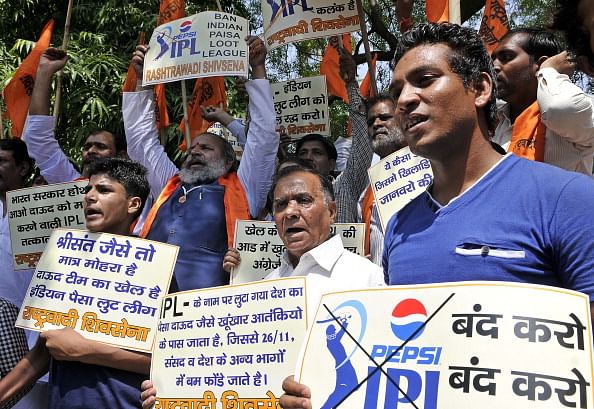
IPL spot-fixing scandal: Time to give assurance to the spectator

The anger is palpable. There isn’t that accustomed widespread outrage, the emotion that is emerging as a reaction to the spot-fixing story is probably that of being desensitised. You are sucked into believing what your sceptical friend always told you about the correlation between the words – IPL and fixing. The crime has been substantiated, the alleged characters have confessed, the law enforcing authorities are widening their ambit of investigation and the avid fan in you is left to wonder how easily your innocent affection for the game has been maliciously tampered with, yet again.
Every sport is bigger than individuals – good or bad, and the good old cliché of ‘the show must go on’ followed suit with decent crowds for the post-fixing-bust-story matches. You probably tuned into Sony Max the next day, resumed scrutinising the points table and started building up for the final couple of laps of this edition of the IPL. You probably realised that the excitement wasn’t the same, the interest levels subsided and your fanaticism altered from being ingenuous to being adulterated with the element of incredulity.
Post the 1999-00 match-fixing saga, the game’s credibility was unperturbed until the spot-fixing episode emerged during the Lord’s Test in 2010. Players were booked for the crime, sentenced to jail terms and all the 3 (including a teenager) handed over life bans. The imposed penalty was unprecedented, the image of cricket players being imprisoned was alarming and you felt that the particular series of events was sufficient enough to deter players from indulging in similar acts.
‘Hope is the denial of reality’ (- Margaret Weis) is a quote which aptly sums up the BCCI’s perceived approach on contentious issues. Within 3 years after the News of the World sting operation in London, two sets of spot-fixing stories have surfaced in India. The stark disconnection in corruption disclosures and ACSU’s (Anti-Corruption and Security Unit) involvement reiterates the serious question marks about the empowerment and seriousness of the governing bodies to ensure proactive vigilance.
Luring, threatening, blackmailing have often been cited reasons by players after being caught. Analysts fragment such stories to classify players into motive-based groups. It won’t be appropriate to pre-empt the reasons in the current case at the moment but the frequent recurrence of suspicious stories and the increasing, facile proximity of deceptive individuals with susceptible cricket players is probably the biggest shocker form this story.
You can probably be convinced by the logic applied for names like Amit Singh, Ajit Chandila and Ankeet Chavan, but it will require strong arguments to rationalise why established names like Salman Butt (the then skipper) and Sreesanth (part of two World Cup victorious squads) would harm their reputation in the game.
It is said that action should not just seem like happening but also happen in all reality; likewise it is important that the cricket boards across the platter must ensure that the average spectator is not deprived of a pristine contest between 22 players with integrity, at all levels of the sport. Clearly, the systems in place are insufficient; the functioning of T20 leagues is behind too many closed doors to merit transparency and there is too much vulnerability about young cricketers, especially those with humble backgrounds. Education of all players is imperative, so is the necessity for channelising things like betting. It might sound exaggerative, but there is an urgent need to sharpen the noose around all entities associated with the IPL – players, owners, officials and administrators, to ensure the authenticity of the tournament isn’t allowed to dip any further.
The expectation from the board is that it accepts the fact that this menace requires a comprehensive treatment rather than mere cursory glance. The ICC will be seeking details of this entire story soon and hopefully the stance of the governing bodies modifies from being that of ‘zero-tolerance’ to ‘100-percent-prevention’. The controlling bodies can do much but cannot rectify the image of a maligned character. Leading players with impeccable integrity must step in this hour of crisis for the game and push for reforms to ensure that the sanctity of the sport is retained. It is imperative that corrective measures are adopted with immediate effect, or the prospect of fans shunning off their loyalty from the game is not an improbable possibility any longer.